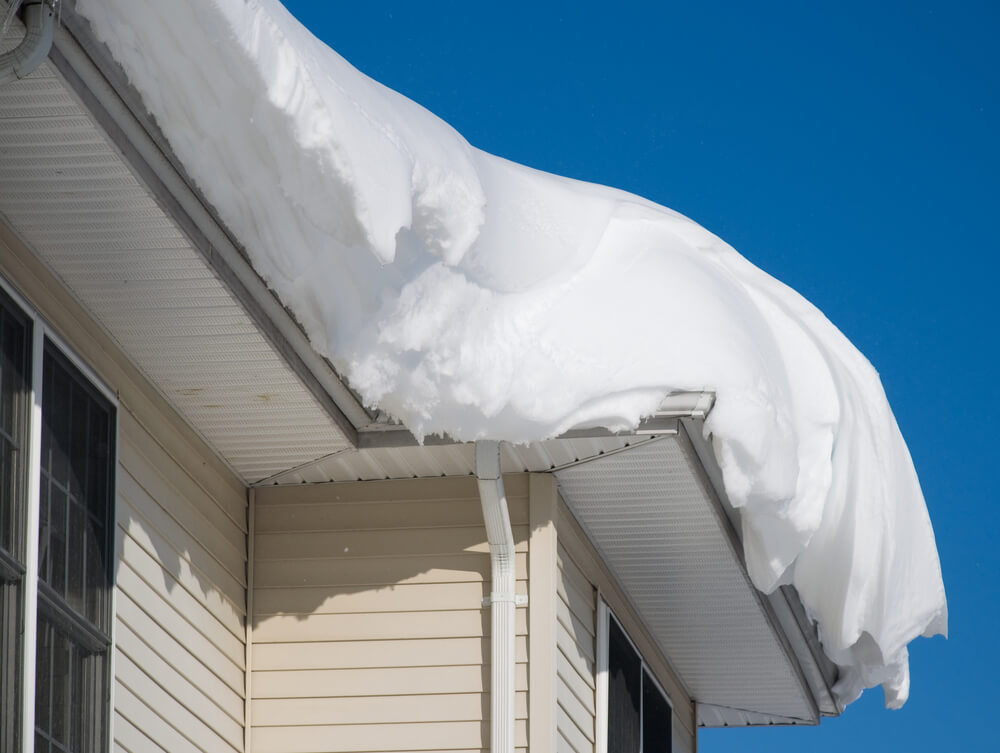How Much Snow on the Roof Is Too Much?

Many people are wondering how much snow on the roof is too much? It often seems like a good idea to let snow build up on your roof for additional insulation, but it may not be worth the cost of damaging your roof and having water leak inside.
Unfortunately, a thick layer of snow on your roof could be bad news for you. Do not let the snow build up. It may seem like a good idea, but it is always best to remove excess snow from your roof before it causes major problems for you and your family. The weight of heavy piles of snow can cause damage to gutters and shingles, resulting in water leaks that are difficult or impossible to repair
In this blog post, we'll explore how much snow is too much, what you should do if it's an emergency, and more!
A sad history
But on a more somber note, for people who have been injured or killed, or the owners of residential, industrial and farming properties that have collapsed due to snow load on the roof, I am sure there needs to be a more definitive answer.
Sadly, most of the initial research that was done, was initiated because of roofs collapsing under snow loading in the past and questions have been asked about the causes of these disasters.
How do you know when a snow load is too much?
It is important to note that there are now national and international building codes that need to be followed to prevent roofs from collapsing under snow loads. However, if the building is more than forty years old, it may well not have been designed to cope with large snow loads.
Snowfall is very difficult to predict in terms of place, time, and quantity. It may not just be one heavy snowfall that causes a problem, but perhaps a collection of snowstorms. Driving winds can change the depth of the snow and snow depth on the ground does not necessarily equate to the snow depth on a roof. Trying to work out whether the snow load is too much for your particular roof requires quite complicated maths.
Does building design matter?
There are so many contributing factors to snow load, that it is difficult to be specific about the causes and precautions that need to be addressed to ensure the safety of the occupants of a building. When subjected to substantial snowfall it is, in fact, more often than not the fault of poor roof construction than the weight of the snow that causes a roof to collapse
The snow load that a roof can withstand is established by many factors including:
- Ground snow load measurements
- Roof slope, shape and amount of wind exposure and drifting
- Use and thermal conditions of the building
- Unbalanced snow loads
Flat roofs are more of a concern when it comes to snow load because the weight cannot be spread. So, the steeper the slope of your roof, the more snow it can hold.
It would be advisable to know the roof weight limits for your building and then calculate what the roof load capacity would be under different amounts of snow.
The method for calculating snow load is to measure the depth of the snow on the roof and multiply it by the weight of a cubic foot of snow. This is based on the approximate measure of a cubic foot of snow having a mass of 10 pounds.
What precautions can I take to avoid too much snow on the roof?
Before the winter snow actually arrives, you should do some routine checks of the roof, beams, etc. and repair any leaks and missing tiles.
In this day and age, very few buildings are at risk of snow loading. In fact, it is probably more dangerous to try to remove snow from the roof, than the actual danger posed by the snow.
Snow can also be a good insulator, so if it isn’t too deep, then it is probably best left alone.
If you decide that the weight of the snow on the roof is giving you cause for concern, then watch a video on how to safely remove snow from your roof. You will find tips on this YouTube video. A handy tip is to open and close every window and door in your house. If any of them are suddenly difficult to operate easily, then you might have a snow load problem caused by the weight pushing down onto the building.
Summary
So, it appears that there are some building regulations that need to be observed when it comes to ensuring that roofs can cope with heavy snowfall.
If you live in a part of the world that experiences a lot of snowfall in the winter, you need to be prepared before the snow piles up on your roof and keep a constant check on the amount of snow that has fallen.
You would be wise to have an insurance policy that covers snow load damage to the roof or building, especially if you live in an old property with a flat roof.





